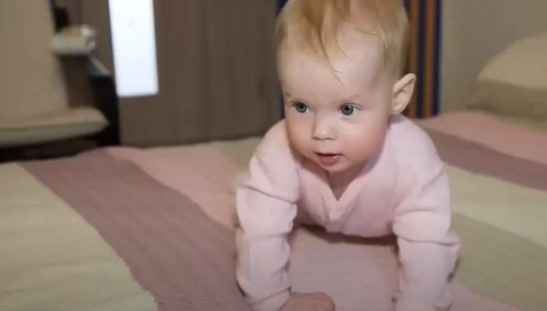To clean a mattress after a child wets the bed, first soak up as much liquid as possible, then use a mixture of baking soda, laundry detergent, and water to treat the area. Blot the mixture gently, allow it to sit, then vacuum up the residue.
Dealing with a wet mattress after a nighttime accident can be stressful for both parents and children. Quick and effective methods are essential for sanitizing and deodorizing the affected area to ensure a hygienic sleep environment.
Children’s comfort and the longevity of the mattress depend on prompt attention to such incidents. Now, we will describe in here about “How to Clean Mattress When Child Wets the Bed?”
The cleaning process doesn’t have to be daunting; with the right approach, you can easily tackle the problem and restore freshness to your child’s mattress.
This guide provides straightforward steps to manage the situation, minimize the occurrence of unpleasant odors, and maintain the quality of the mattress, ensuring a clean, dry, and comfortable bed for your little one.
Introduction To Childhood Bedwetting
Childhood bedwetting is a common scenario many families navigate. It’s a phase where a child, beyond the age of toilet training, may still wet the bed at night. This can happen for a range of reasons and it’s mostly normal in younger children. Let’s explore the causes and effects of bedwetting, alongside the realities that parents face during this time.
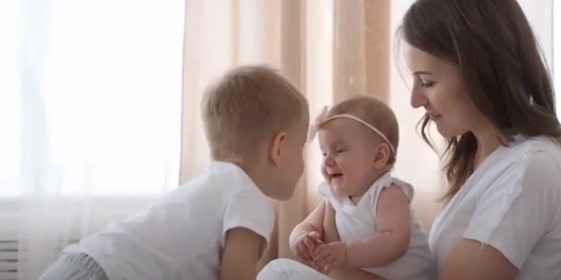
Bedwetting: Causes And Impacts
Bedwetting, also known as nocturnal enuresis, could stem from deep sleep, slow bladder development, or hormonal factors. Notably, it isn’t the child’s fault nor is it within their control. Bedwetting can impact both the child’s and the family’s daily life. Sometimes, it can also be linked to genetics, if either parent had a similar experience in childhood.
Emotional And Practical Challenges For Parents
Parents often face both emotional and practical hurdles when their child wets the bed. Emotionally, there is a need for patience and understanding. Practically, bedwetting means extra laundry and the possibility of maneuvers to protect the mattress. It requires a balance of comfort for the child and routines that help manage the effect on household chores.
Immediate Response To Bedwetting Incidents
Discovering that a child has wet the bed can be challenging for both parent and child. But quick actions can minimize discomfort. It’s important to know effective ways to clean a mattress after an incident. Address the situation with compassion followed by immediate cleaning steps to ensure the mattress remains fresh and the child feels comfortable.
Steps To Comfort And Reassure Your Child
- Talk calmly to your child to reduce embarrassment.
- Offer comfort and appreciation.
- Change clothes and wash any affected areas gently.
- Explain that accidents happen and it’s okay.
Quickly Protecting The Mattress From Moisture
- Remove the wet bedding immediately.
- Blot the mattress with absorbent towels to soak up moisture.
- Sprinkle baking soda over the area to absorb odors. Let it sit for a few hours.
- Vacuum the baking soda and air out the mattress if possible.
- Cover with a waterproof mattress protector for future incidents.
Essential Supplies For Cleaning A Wet Mattress
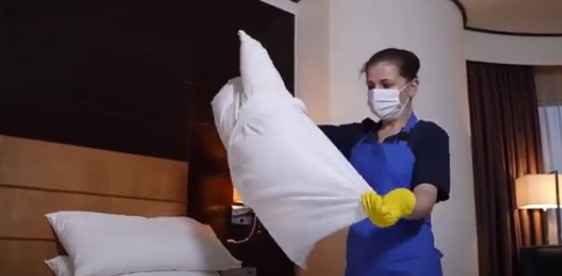
Cleaning up after a nighttime accident can feel overwhelming. Be prepared by gathering the right tools for the job. Knowing what supplies you need upfront saves time and minimizes stress. Here are the essentials to tackle the clean-up efficiently.
Protective Gloves And Cleaning Agents
Start with protective gloves to keep your hands clean and safe from cleaning agents. A good pair of latex or rubber gloves is a must-have during this process.
Choosing the right cleaning agent is essential . Look for non-toxic, enzymatic cleaners specifically designed to break down urine stains and odors. Typically, a mixture of vinegar and baking soda does wonders, too.
Absorbent Towels And Waterproof Covers
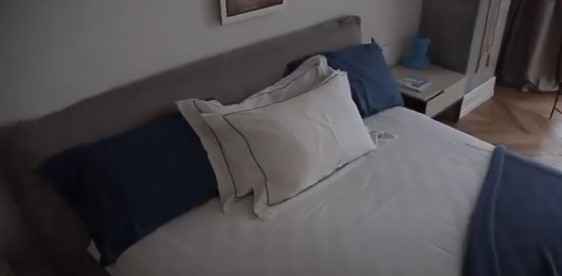
Have plenty of absorbent towels on hand to blot up the moisture. Press them firmly into the mattress to soak up as much liquid as possible.
Invest in a waterproof mattress cover for future prevention. These covers are invaluable, protecting the mattress from future accidents and making clean-up a breeze.
| Cleaning Supply | Use |
|---|---|
| Gloves | Protect Hands |
| Enzymatic Cleaner | Break Down Stains |
| Vinegar & Baking Soda | Natural Alternative |
| Absorbent Towels | Soak Up Moisture |
| Waterproof Cover | Shield Mattress |
Step-by-step Guide To Cleaning The Mattress
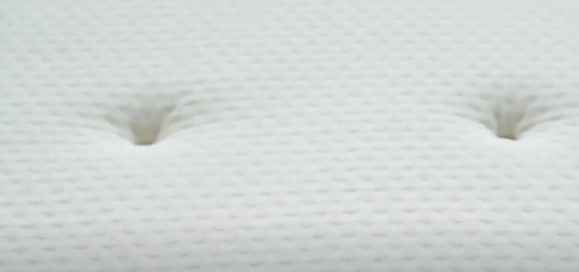
Welcome to the Step-by-Step Guide to Cleaning the Mattress after your child has had a nighttime accident. We understand that these incidents can be stressful. But, with these simple and effective steps, you can restore the mattress to a clean and fresh state quickly.
Removing Bedding And Assessing The Wet Area
Start by stripping the bed of its sheets and mattress cover. These should go straight into the washing machine. Next, take a good look at the mattress. Note how large and deep the wet area is.
- Remove all pillows, toys, and covers.
- Wash bedding in hot water.
- Evaluate the size of the soaked spot on the mattress.
Blotting Out Excess Moisture And Applying A Cleaning Solution
Grab a clean, dry towel to press firmly into the mattress. This action helps pull out as much liquid as possible. Avoid rubbing to prevent the moisture from spreading.
- Use a towel to dab the wet spot.
- Prepare a mixture of gentle detergent and water.
- Apply the cleaning solution to the area with a spray bottle.
- Let the solution sit for 5 minutes.
Rinsing And Drying The Mattress Thoroughly
After the cleaning solution has done its job, it’s time to rinse. Use a damp cloth with clean water to wipe the area. Finish by blotting with a dry towel to remove residual moisture.
- Gently wipe with a damp cloth.
- Blot with a dry towel to remove leftover moisture.
- Use fans or open windows to air dry the mattress.
- Wait until the mattress is completely dry before remaking the bed.
Remember to be patient; a fully dry mattress ensures cleanliness and comfort for your child’s next peaceful sleep.
Natural And Chemical-free Cleaning Solutions
Welcome to the world of natural and chemical-free cleaning solutions for tackling those unfortunate moments when a child wets the bed. It’s essential to address the mess swiftly to prevent any lasting damage or odors, and fortunately, there are effective natural methods to freshen up the mattress without resorting to harsh chemicals.
Using Baking Soda And Vinegar
These two pantry staples are a powerhouse duo for cleaning and neutralizing odors.
- Strip the bed and wash all linens.
- Blot the wet area with dry towels to absorb as much liquid as possible.
- Sprinkle baking soda generously over the affected area.
- Wait for a few hours, allowing the soda to absorb moisture and odor.
- Vacuum the dried baking soda from the mattress surface.
- Mix equal parts of white vinegar and water in a spray bottle.
- Lightly spray the solution onto the spot without soaking the mattress.
- Allow it to air dry completely before remaking the bed.
This method is not only simple but also safe and effective.
Essential Oils For Disinfection And Odor Removal
Essential oils offer a natural way to kill germs and combat odors.
- Choose antiseptic oils like tea tree, lavender, or eucalyptus.
- After cleaning with baking soda and vinegar, add a few drops of essential oil to a water spray bottle.
- Lightly mist the mattress surface, focusing on the spot.
- Wait for the mattress to dry completely before use.
These essential oils not only leave a pleasant scent but also naturally disinfect the area, ensuring a clean, fresh sleeping environment.
Addressing Stains And Odors Effectively
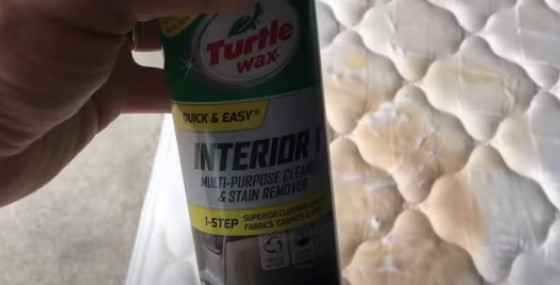
Accidents happen, especially with children. A wet mattress needs immediate attention to avoid lasting damage. Act fast to clean stains and eliminate odors. Lessen the hassle with effective cleaning techniques. Preserve the comfort and hygiene of mattresses with these straightforward solutions.
Spot Cleaning Stubborn Stains
Ridding mattresses of stubborn stains starts with spot cleaning.
- Remove bedding and blot the wet area.
- Mix a solution of 50% white vinegar and 50% water.
- Apply the mixture to the stain and blot again.
- Sprinkle baking soda over the area and let it sit for 8-10 hours.
- Vacuum the dried baking soda for a stain-free mattress.
Neutralizing Odors And Preventing Mold Growth
Odors and mold can turn a small accident into a big problem. Combat odors and deter mold with simple steps.
- Use a dilute vinegar solution to break down odor-causing bacteria.
- Sprinkle a generous amount of baking soda on the mattress to absorb smells.
- After several hours, vacuum the baking soda thoroughly.
- Allow the mattress to air dry completely to prevent mold.
- Consider a waterproof mattress protector for future accidents.
Protective Measures To Mitigate Future Incidents
Protective measures play a vital role in keeping your child’s mattress clean and dry. Every parent dreads the midnight mishap of bedwetting, but with the right precautions, these incidents can become far less stressful. Implementing effective solutions not only safeguards the mattress but also ensures your child enjoys a cozy and hygienic sleep environment.
Choosing The Right Mattress Protector
A mattress protector is the first line of defense. Ensure it’s waterproof, hypoallergenic, and comfortable. The right protector will:
- Block moisture, preventing any liquids from seeping into the mattress
- Guard against allergens and dust mites
- Be machine washable for easy cleanup
Consider materials like vinyl or polyurethane for optimal protection. They are durable and effective at repelling liquids.
Incorporating Absorbent Layers
Additional absorbent layers can significantly reduce the mess. These layers might include:
- Waterproof bed sheets
- Absorbent mattress pads
Place them on top of the protector for added absorption. Choose materials such as cotton, bamboo, or special absorbent fabrics. They draw in and trap moisture effectively. Cleanup becomes as simple as stripping the layers and tossing them into the wash.
Caring For The Child’s Bed Linen And Pajamas
When your child has an accident at night, cleaning everything quickly becomes a top priority.
The right approach to bed linen and pajamas care can keep them fresh and comfortable for the next snooze.
Best Practices For Washing And Drying
Dealing with a wet bed requires prompt action. Follow these steps right after stripping the bed:
- Rinse bed linens in cold water to dilute urine.
- Use a gentle wash cycle with warm water and regular detergent.
- Opt for a second rinse cycle to ensure all detergent is out.
- Air dry linens if possible, or use a dryer on a low-heat setting.
These steps help prevent stains and odors from setting into fabrics.
Using Hypoallergenic Laundry Products
Children’s skin can be sensitive, so it’s essential to choose the right laundry products:
- Select detergents marked as ‘free and clear’ of dyes and perfumes.
- Use laundry additives designed to neutralize odors without harsh chemicals.
- Avoid fabric softeners which can irritate sensitive skin.
Hypoallergenic products protect your child’s skin and provide a deep clean.
Creating A Supportive Environment For The Child
When a child wets the bed, it’s important to tackle the cleanup while offering emotional support. Balancing practicality with a nurturing attitude is key. A child’s confidence remains intact when they feel understood and not criticized for accidents. This section offers advice on creating an environment that helps the child feel secure and confident during this phase.
Avoiding Shame And Encouraging Openness
Bedwetting can be embarrassing for children. Reinforce that it’s a common part of growing up and they’re not alone. Use positive language and actions to avoid any sense of shame. Here are strategies to encourage openness:
- Speak in a calm and reassuring tone.
- Highlight that bedwetting is not their fault.
- Share stories of other people who have overcome it.
- Provide comfort and interpretation.
Open communication sets a tone of trust. It teaches your child to approach challenges with a problem-solving attitude.
Establishing A Nighttime Routine To Reduce Incidents
A consistent bedtime routine can minimize bedwetting. Keep evenings relaxed and follow steps that prepare for a dry night:
| Time Before Bed | Activity |
|---|---|
| 2 hours | Limit liquids |
| 1 hour | Use the bathroom |
| 30 minutes | Relaxing activities like reading |
| Right before bed | Last bathroom visit |
Remind your child to use the bathroom right before sleeping. Use protective waterproof mattress covers to ease clean-ups and preserve the mattress. Praise your child for following the routine, even on dry or wet nights.
When To Seek Medical Advice
Discovering a wet mattress can be a common scenario for many parents. Sometimes, it’s just a part of a child growing up. But there may be times when it’s important to seek medical advice. The following sections will help parents identify when it’s time to consult a healthcare professional.
Recognizing Patterns That May Indicate Health Issues
Tracking your child’s bedwetting can reveal patterns. A sudden change in frequency or wetting during naps could signify health concerns. Look out for these signs:
- Bedwetting if dry nights were consistent for several months
- Increased frequency of episodes compared to usual patterns
- Bedwetting associated with symptoms like burning urination or excessive thirst
- Signs of snoring or breathing difficulties during sleep
If these observations raise concerns, it’s time for a pediatrician’s input.
Consulting With Pediatricians And Specialists
Sharing any worrisome patterns with a pediatrician will determine the next steps. Here’s how to prepare for a consultation:
- Document wetting incidents and related symptoms ahead of time
- Discuss changes in routines, diet, or stressors with your doctor
- Ask about non-invasive tests that may help identify issues
- Consider a referral to a specialist if recommended by the pediatrician
Consultation and early intervention can provide peace of mind and support your child’s well-being.
Summary Of Best Practices
Now we’ve explored methods to clean a mattress after a nighttime accident, let’s summarize the best practices.
Recap Of Effective Cleaning Techniques
- Remove beddings and wash them in hot water.
- Blot the wet area with absorbent towels.
- Apply a mixture of 50% white vinegar and 50% water to the stain.
- Use baking soda to eliminate odors and draw out moisture.
- Let it air dry or use a fan to speed up the process.
- Consider a waterproof mattress protector for future protection.
Emphasizing Patience And Concern Throughout The Process
React calmly to nighttime accidents to make your child feel secure. Use this time to teach your child it’s okay and accidents happen. Stay positive and use gentle cleaning methods to freshen up the mattress. Remember, patience and reassurance are key during these moments.
| Task | Action | Cleaning Agent |
|---|---|---|
| Stain Removal | Blot and apply vinegar solution | White Vinegar |
| Odor Elimination | Sprinkle and vacuum baking soda | Baking Soda |
| Drying | Air dry or use a fan | – |
Frequently Asked Questions On How To Clean Mattress When Child Wets The Bed
How Do You Quickly Clean A Wet Mattress?
After blotting excess liquid, sprinkle baking soda on the affected area. Let it sit for several hours to absorb odors and moisture. Vacuum the baking soda off, then use a disinfectant spray for sanitation. Air out the mattress to dry completely before remaking the bed.
What Removes Urine Stains From Mattresses?
To remove urine stains, mix a solution of two parts cold water, one part vinegar, and a small amount of laundry detergent. Apply this mixture to the stain and gently rub it in with a soft cloth. After treating the stain, blot out excess moisture and let the mattress air dry.
Can Baking Soda Neutralize Urine Odor On Mattresses?
Yes, baking soda can neutralize urine odor on mattresses. Liberally sprinkle baking soda over the affected area after blotting up as much urine as possible. Allow it to sit for a few hours or overnight to absorb the odor, then vacuum the residue.
Is It Safe To Use Bleach On A Mattress?
It’s generally not recommended to use bleach on a mattress as it can damage the fabric and colors. Instead, opt for a mixture of vinegar and water or a mild detergent solution. Always spot test a small area first and follow manufacturer guidelines.
Is Urine Bad For Mattress?
Urine can be detrimental to a mattress as it can lead to unpleasant odors, stain the fabric, and create a breeding ground for bacteria. Promptly addressing any urine spills and employing proper cleaning methods is necessary to maintain the hygiene and longevity of your mattress.
Can You Shampoo A Mattress?
While it’s not common to shampoo a mattress, you can spot clean it with a mild detergent and water solution. However, it’s essential to ensure the mattress doesn’t get overly wet to prevent potential damage or mold growth.
Conclusion
Dealing with a wet mattress can be daunting, but it’s not impossible. Following the steps outlined above will help ensure a clean, fresh sleeping environment for your child. Remember, prompt action, proper cleaning supplies, and regular maintenance are key. Keep these tips in hand, and you’ll tackle the challenge with ease, paving the way for serene, dry nights ahead.

